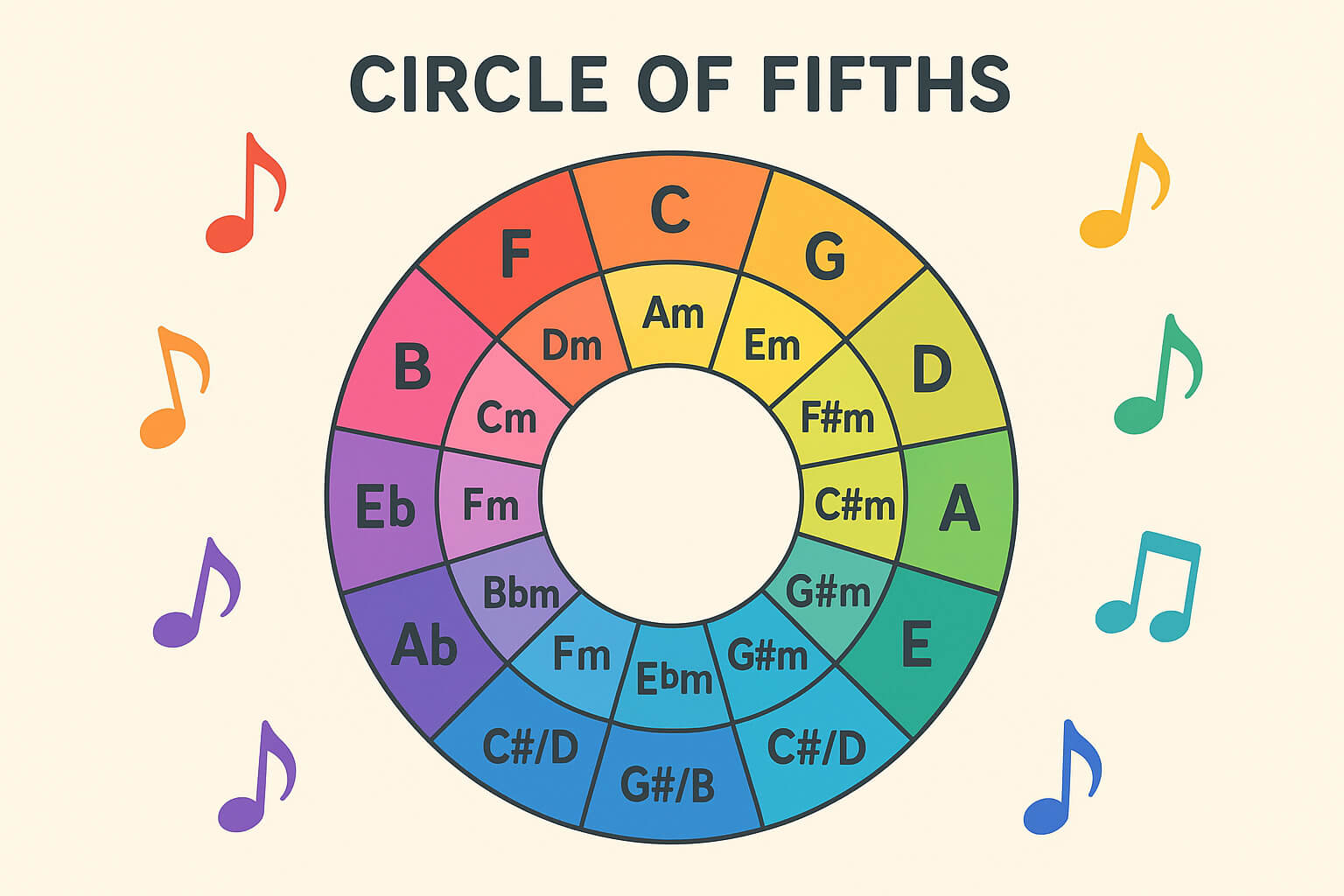August 13, 2025

The Circle of Fifths is one of the most important concepts in music theory—and once you understand it, music starts making a lot more sense. Whether you’re learning an instrument, writing your first songs, or trying to improvise, the circle gives you a roadmap to navigate keys, chords, and harmonies.
Let’s break it down from the ground up.
At its core, the Circle of Fifths is a diagram that organizes all 12 notes of the chromatic scale in a circular shape, spaced apart by intervals of a perfect fifth.
Every step adds one sharp (going clockwise) or one flat (going counterclockwise) to the key signature.
The outer ring shows major keys, and the inner ring shows their relative minor counterparts (which share the same key signature).
It’s not just a pretty diagram—it’s a functional map for:
If you’d like to play with an interactive version, check out tools like Toned Ear or this excellent Circle of Fifths lesson at musictheory.net.
Learning the Circle of Fifths early on gives you a significant edge in all areas of music. Here's how it can help:
You no longer need to memorize which keys have what sharps or flats. For example:
Want a deeper grasp of key signatures and how they appear on the staff? Use this beginner-friendly notation and music reading guide to build your foundation.
Chords built from notes next to each other on the circle are closely related harmonically. That’s why common chord progressions like C → G → Am → F sound so natural—they’re neighbors on the circle.
You can use online chord tools like ChordChord to quickly create progressions using the Circle of Fifths structure.
Need to move a song from G major to C major? The Circle tells you:
Transposing becomes logical instead of guesswork.
Improvising isn’t about random notes—it’s about understanding which notes belong in the current key, and knowing how to shift to a new one.
When you use the circle:
For more guidance, pairing your improv with a Digital Audio Workstation (DAW) like GarageBand or Ableton Live can help you visualize and hear how harmony works in real-time. If you’re new to DAWs, check out this breakdown of how to choose and use them effectively.
The Circle of Fifths has symmetry and logic, making it easier to memorize music theory concepts:
This pattern-based learning is more intuitive than memorizing random facts.
Let’s break down the circle step-by-step:
Practice makes patterns stick. Try these:
Stay up to date with the latest tips, expert insights, product reviews, and step-by-step guides to help you grow, create, and succeed—no matter your industry or passion.